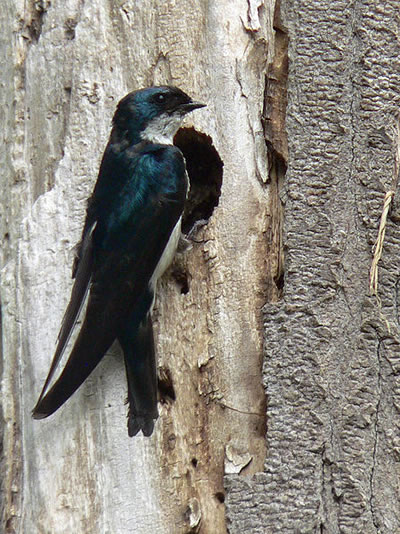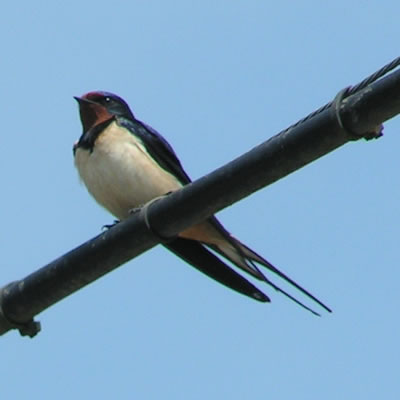Sunbirds

Facts about creatures
- Home
- Animal Classification
- Animal Habitats
- Amphibians
- Arthropods
- Bats
- Birds
- Carnivorans
- Cetaceans
- Chordates
- Crustaceans
- Dinosaurs
- Diprotodonts
- Elephants
- Fish
- Golden Mole
- Insects
- Lagomorphs
- Mammals
- Mammal Teeth
- Marsupial Mole
- Metamorphosis
- Mollusks
- Primates
- Reptiles
- Rodents
- Ruminants
- Soricomorphans
- Tenrec
- Tetrapods
- Vertebrates
Swallows
Swallows are passerines that belong to the family Hirundinidae.
A swallow is streamlined for flight. Its body is very thin, and its wings are long and pointed. This makes it easy for the swallow to catch insects as they fly.
Swallows can maneuver their bodies with ease and are excellent gliders.
They spend most of their time flying.

Some swallows are known as martins. However, there is no clear genetic distinction between birds that are commonly known as swallows and birds that are called martins. In general, a birds with a forked tails is usually called a swallows, and one with a square tail is usually called a martin.
This is an example of folk taxonomy, in which cultures classify organisms according to their external characteristics.
Swallows can be found on every continent of the world, except Antarctica. Some species live on islands in the Pacific and Indian Oceans.
Some North American and European swallows migrate for long distances.
Many people consider swallows to be beneficial because they eat insects.
The white-eyed river martin, which is native to Thailand, is a critically endangered species.
Barn Swallow
The barn swallow breeds all over the northern hemisphere and winters in South America, southern Africa and northern Australia.
Although it originally bred in caves, the barn swallow now almost always makes its nests in structures that were built by human beings, such as barns. Barn swallows may sometimes build nests under bridges or on wires.
In Japan and Korea, some people believe that it is lucky to have a barn swallow build a nest on your house, so they nail small platforms to the sides of their houses to encourage nest-building.

Sand Martin
The sand martin, also known as the bank swallow, the European sand martin, or the collared sand martin, breeds in the northern hemisphere – in North America, Europe and northern Asia, and winters in the southern hemisphere – in South America, Africa and southern Asia.
A sand martin’s nest consists of a burrow in a sandy cliff. A hole in the cliff provides an entrance to the burrow. Sand martins use the same nests year after year.
After returning to their northern breeding ground in the spring, a colony of sand martins will engage in a ritual in which they choose their nests.
At first, they will fly up and down in front of the cliff face, making loud, chattering sounds.
Suddenly, they will all turn and fly at the face of the cliff, with a pair of birds flying hanging by their toes at the entrance of each tunnel.
One member of each pair will inspect the tunnel. The other member of the pair then follows.
All at once, the sand martins will fly off again and resume flying up and down in front of the cliff face.
Then, they return to inspect the tunnels again.
They repeat this process over and over.
Eventually, each pair picks a tunnel and they begin the process of building their nests.
Cliff Swallows of Capistrano
The cliff swallow is a migratory bird that breeds in North America and spends its winters in western South America.
Cliff swallows nest in large colonies. One site can have hundreds of nests.
The cliff swallows of Capistrano, California are legendary. Every spring they return from their winter breeding grounds in Villa Ventana in Argentina to the Mission San Juan Capistrano, where a festival is head to celebrate their arrival.
Legend says that they return every year on March 19. In fact, they do not always arrive on exactly the same day each year.
The cliff swallows return to Villa Ventana in September. A monument to the swallows lies at the entrance of the Argentine city.
Cliff swallows do not always build their nests on cliffs. Sometimes they will build nests under the eaves of barns or other buildings.
At Capistrano, the swallows’ nests, which are made of mud, are clustered under the roofs of the mission’s old buildings, clinging to the heavy beams.